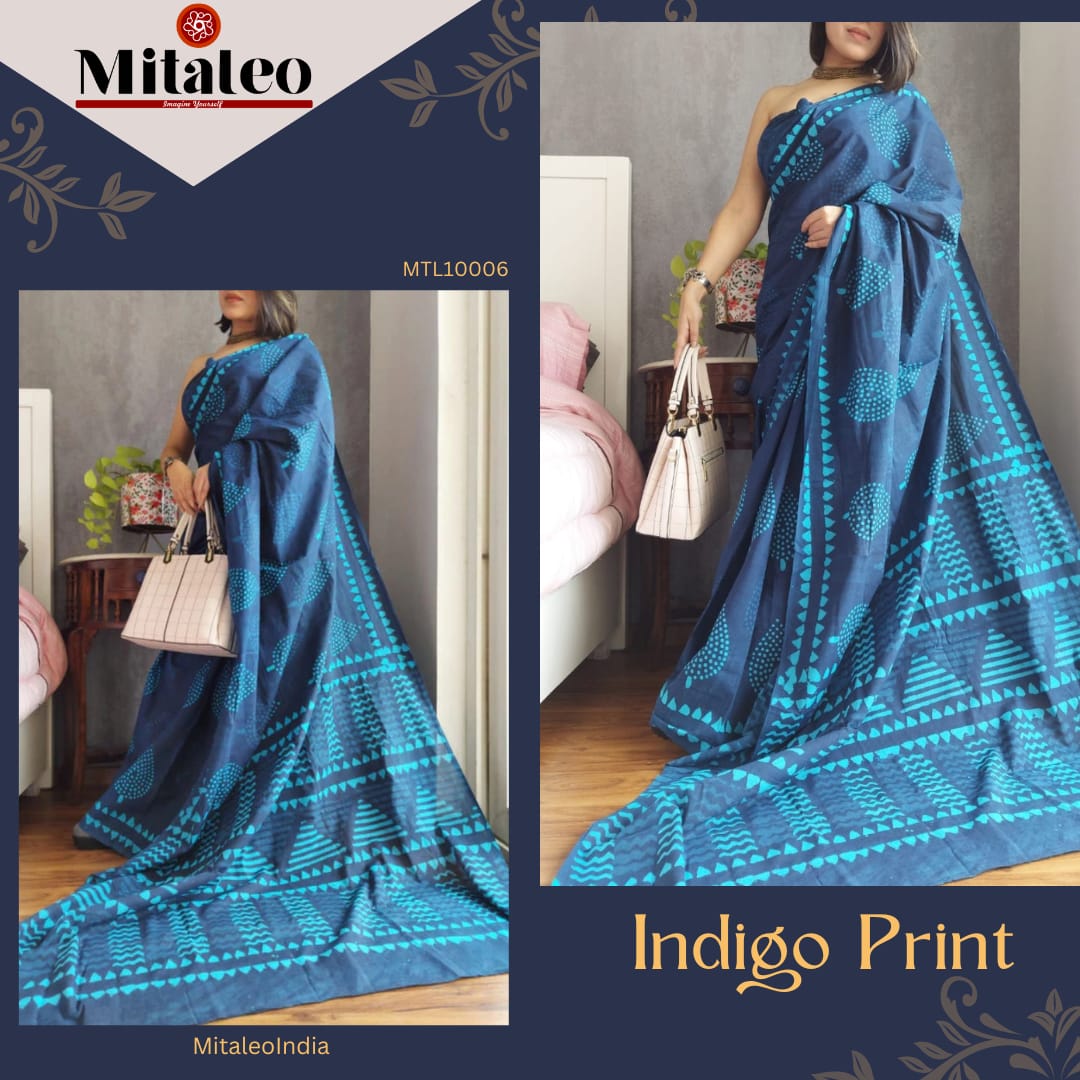Introduction
In the vibrant tapestry of Indian culture, few colors hold as much significance and allure as indigo. This deep, captivating hue has woven its way into the fabric of Indian fashion, particularly in traditional clothing like sarees. In this blog, we will explore the enchanting world of indigo clothing, its cultural significance, and its evolution in the context of India.
The Magic of Indigo
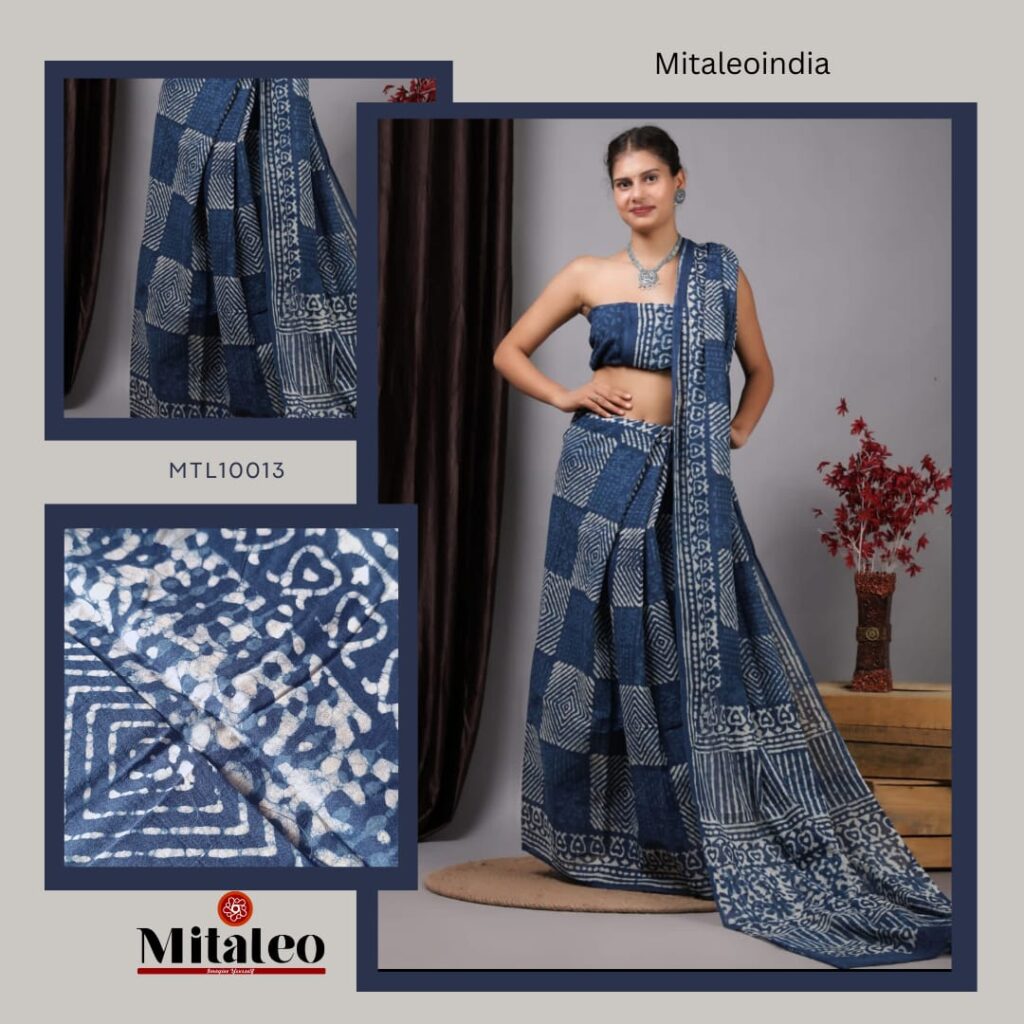
Indigo is a color that resonates deeply with people across cultures. It is a rich, dark blue with a hint of purple, often described as the color of the midnight sky. This captivating hue has a unique charm that makes it stand out in the world of fashion. But indigo is more than just a color; it has a fascinating history and cultural significance.
- Historical Significance: Indigo dye has been used for centuries in India and other parts of the world. The use of indigo dates back to the ancient Indus Valley civilization, where it was extracted from the indigofera plant. The dyeing process involves a labor-intensive extraction and fermentation process, making it an art form in itself.
- Symbolism: Indigo is often associated with wisdom, spiritual awareness, and intuition in various cultures. In India, it is also linked to the vastness of the ocean and the infinite sky, representing depth and timelessness.
Indigo in Sarees
Sarees are an integral part of Indian culture and fashion. These elegant and versatile garments come in a wide variety of fabrics, designs, and colors. Indigo sarees, however, have a special place in the hearts of many.
- Timeless Elegance: Indigo sarees exude timeless elegance and sophistication. The deep blue color complements a range of skin tones, making it a popular choice for both formal and casual occasions.
- Traditional Craftsmanship: Many indigo sarees are handcrafted by skilled artisans who have mastered the art of dyeing and printing. Techniques like Bandhani (tie-and-dye), Ajrakh, and Batik involve intricate patterns and designs, making each saree a work of art.
- Versatility: Indigo sarees can be styled in various ways, making them suitable for weddings, festivals, or everyday wear. They can be paired with traditional jewelry for a classic look or accessorized with modern elements for a fusion style.
- Regional Variations: Different regions of India have their own unique styles of indigo sarees. For instance, the Bagru and Sanganeri prints of Rajasthan are known for their bold and vibrant patterns, while the Shibori technique of tie-dye is popular in Gujarat and parts of Odisha.
Cultural Significance
Indigo clothing, particularly sarees, plays a significant role in Indian culture:
- Weddings: Indigo sarees are often chosen for wedding ceremonies and rituals. They symbolize the depth of commitment and the enduring nature of love.
- Festivals: During festivals like Diwali and Holi, indigo sarees are worn to celebrate the colors of life and the triumph of good over evil.
- Daily Life: In many parts of India, indigo clothing is worn as everyday attire, reflecting the deep-rooted connection between indigo and daily life.
Conclusion
Indigo clothing, with its rich history, deep symbolism, and exquisite craftsmanship, continues to enchant fashion enthusiasts and cultural enthusiasts alike in India. The indigo saree, in particular, stands as a beautiful embodiment of tradition and modernity, offering a timeless allure that resonates with the soul of Indian culture. So, the next time you see someone wearing a stunning indigo saree, remember that it’s not just a piece of fabric; it’s a piece of India’s rich heritage and vibrant culture.
You Can Choose Our INDIGO Collection On Mitaleo.com
-
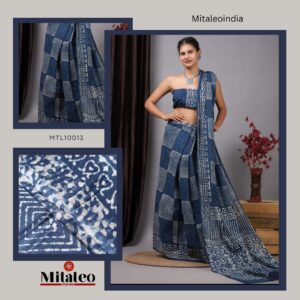 Product on saleIndigo Square Cotton Mulmul Hand Printed SareeOriginal price was: ₹1,399.00.₹999.00Current price is: ₹999.00.
Product on saleIndigo Square Cotton Mulmul Hand Printed SareeOriginal price was: ₹1,399.00.₹999.00Current price is: ₹999.00. -
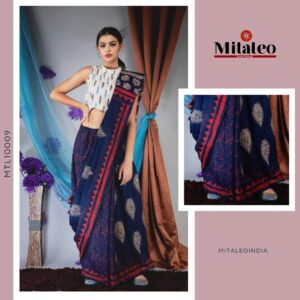 Product on saleCultural Red Border Cotton Mulmul Hand Printed SareeOriginal price was: ₹1,599.00.₹999.00Current price is: ₹999.00.
Product on saleCultural Red Border Cotton Mulmul Hand Printed SareeOriginal price was: ₹1,599.00.₹999.00Current price is: ₹999.00. -
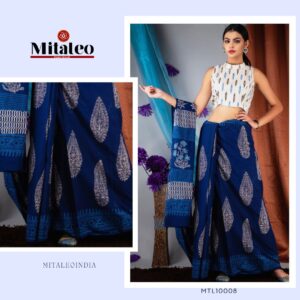 Product on saleBlue Cultural Design Cotton Mulmul Hand Printed SareeOriginal price was: ₹1,599.00.₹999.00Current price is: ₹999.00.
Product on saleBlue Cultural Design Cotton Mulmul Hand Printed SareeOriginal price was: ₹1,599.00.₹999.00Current price is: ₹999.00. -
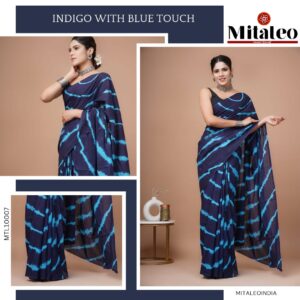 Product on saleIndigo Blue Line Cotton Mulmul Hand Printed SareeOriginal price was: ₹1,399.00.₹999.00Current price is: ₹999.00.
Product on saleIndigo Blue Line Cotton Mulmul Hand Printed SareeOriginal price was: ₹1,399.00.₹999.00Current price is: ₹999.00. -
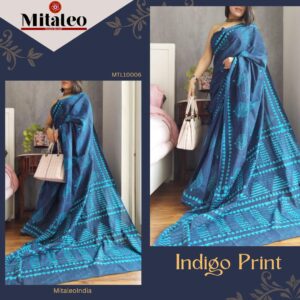 Product on saleIndigo Poly Cotton Mulmul Hand Printed SareeOriginal price was: ₹1,399.00.₹999.00Current price is: ₹999.00.
Product on saleIndigo Poly Cotton Mulmul Hand Printed SareeOriginal price was: ₹1,399.00.₹999.00Current price is: ₹999.00. -
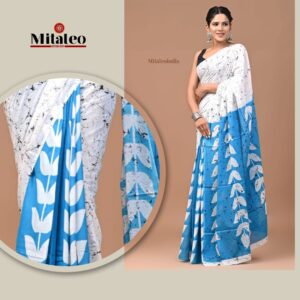 Product on saleSky Blue Cotton Mulmul Hand Printed SareeOriginal price was: ₹1,599.00.₹999.00Current price is: ₹999.00.
Product on saleSky Blue Cotton Mulmul Hand Printed SareeOriginal price was: ₹1,599.00.₹999.00Current price is: ₹999.00.

